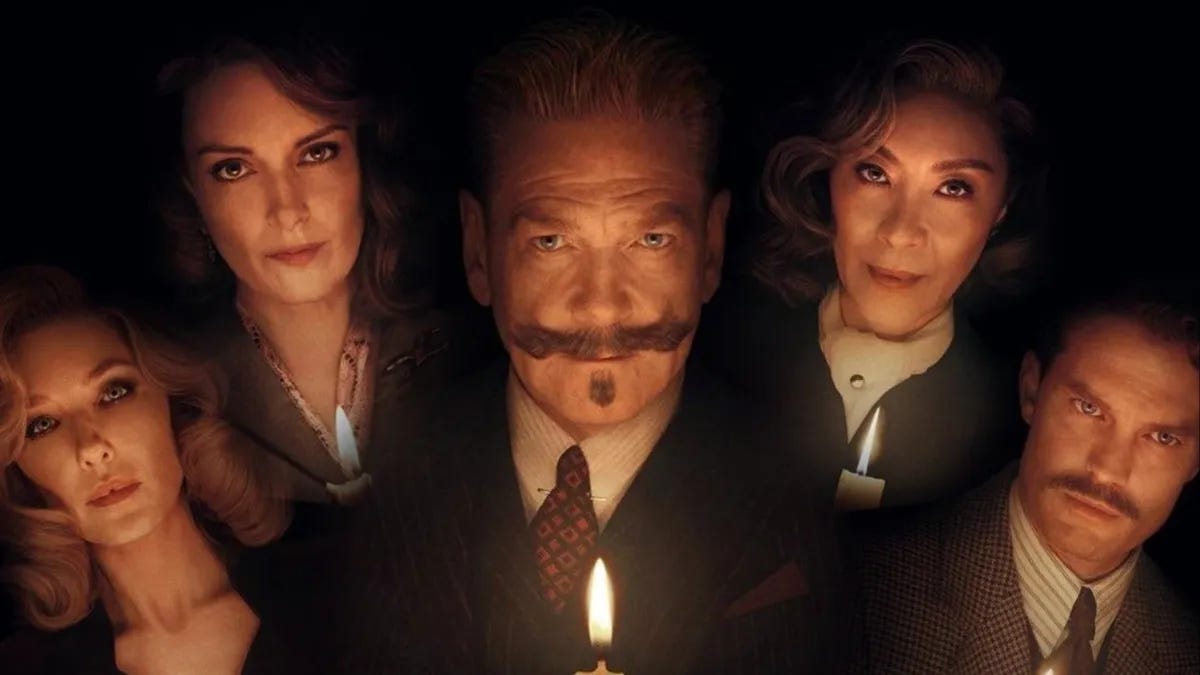Human Lens #119: 'A Haunting in Venice' Review
Branagh entertains yet again as the mustachioed detective
I’m a sucker for the murder mystery sub genre. They are a portal to a bygone era of Hollywood — lavish sets with incredible costumes and adorning a cast of well known and highly acclaimed actors all coming together to have fun and support a story that requires their distracting nature. The best murder mysteries use their cast’s typical penchant for screen time in other projects to subvert the expectations of the viewer. When everyone’s a star, no one is, therefore making it harder to guess who will die and who the murderer is. The best ones are always surprising.
It’s the surprising nature of Agatha Christie’s novels that have made them so cinematic; with multiple iterations of her Hercule Poirot detective novels appearing on film and television with some of the best talent in Hollywood behind them. The well known film personality, actor, and longstanding director Kenneth Branagh has been playing the famous detective for five years now, directing himself in remakes of Murder on the Orient Express and Death on the Nile. The first, a fun jaunt at the movies made on beautiful 65mm film that brought home major box office success. The second, however, was a product of the Covid-19 pandemic and the Disney-Fox merger, lowering it’s cinematic value and starring multiple actors who fell from grace during our time in lockdown. Now we have a new installment, based off a lesser known Christie novel, testing Poirot’s beliefs and ability to ascertain the truth.
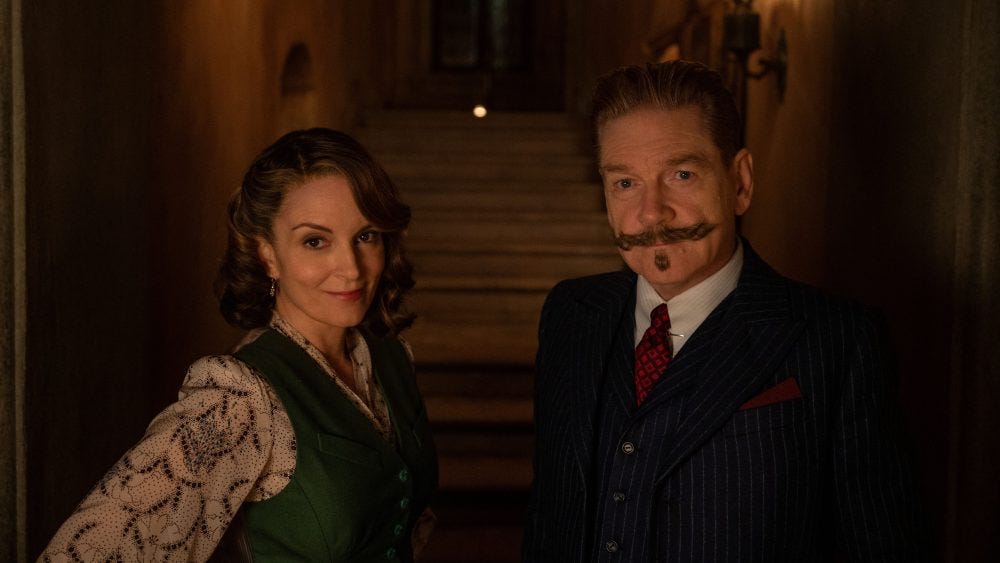
A Haunting in Venice, adapted from Agatha Christie’s novel Hallowe’en Party, finds a retired Hercule Poirot trying to enjoy retirement in post-World War II Venice. Invited to a seance by an old friend and detective author with the challenge of finding the ruse within the performance, Poirot becomes wrapped up in a mystery that spans over a year, coming together on this night at the heels of another murder. With reality and spirituality blending together as the night goes on, Poirot must solve the murder while also battling his own beliefs — as something in the house may be beyond the corporeal answers that he always ascertains.
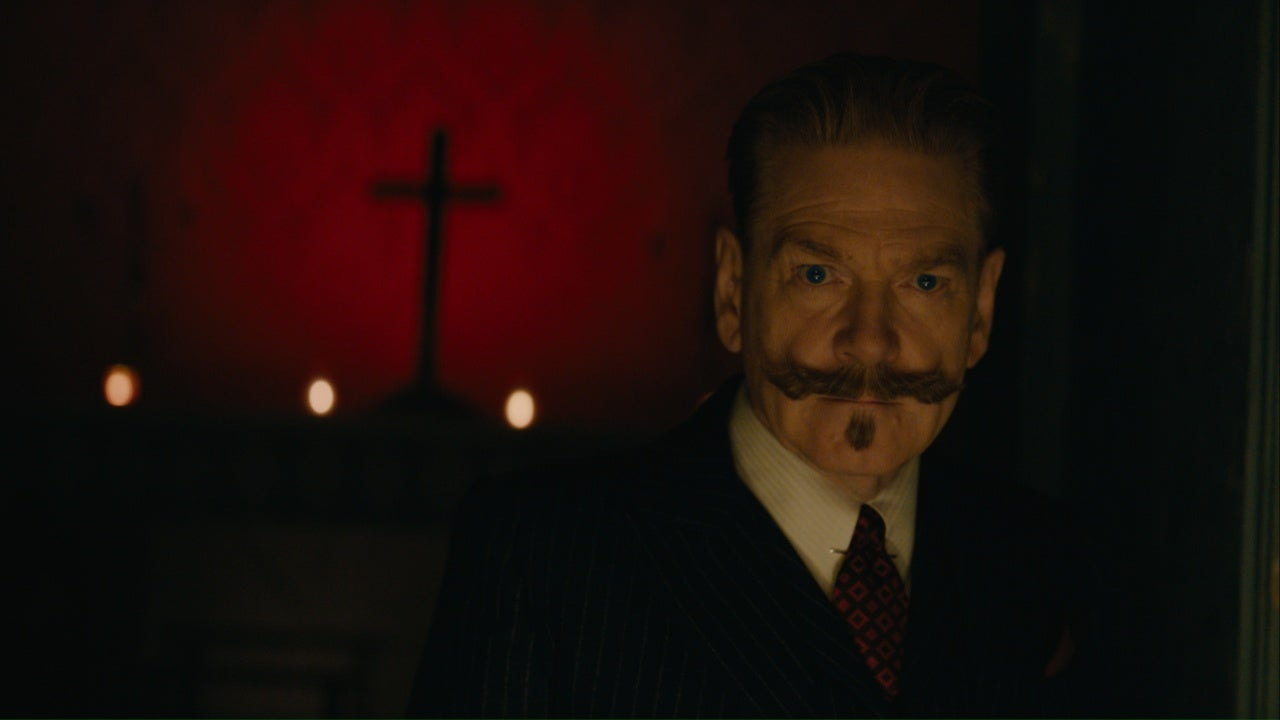
Kenneth Branagh has been playing Detective Poirot for a while now and his portrayal of an extremely unique character, especially for this current time in film and literature, is intoxicating. I could watch Branagh for an endless amount of movies interact with his fellow actors with a respectful and strange accent and massive mustache (which gets it’s own emotional origin in Death on the Nile, the only redeeming quality of that movie). But what makes Poirot so interesting is his extreme intelligence despite his silly mannerisms and penchant to measure his eggs before eating them. When everything comes together, he’s able to piece together things that no one else could see, and I felt Branagh’s editing and delivery in this one were a great combination, giving us a twist that was way harder to predict than the previous installment.
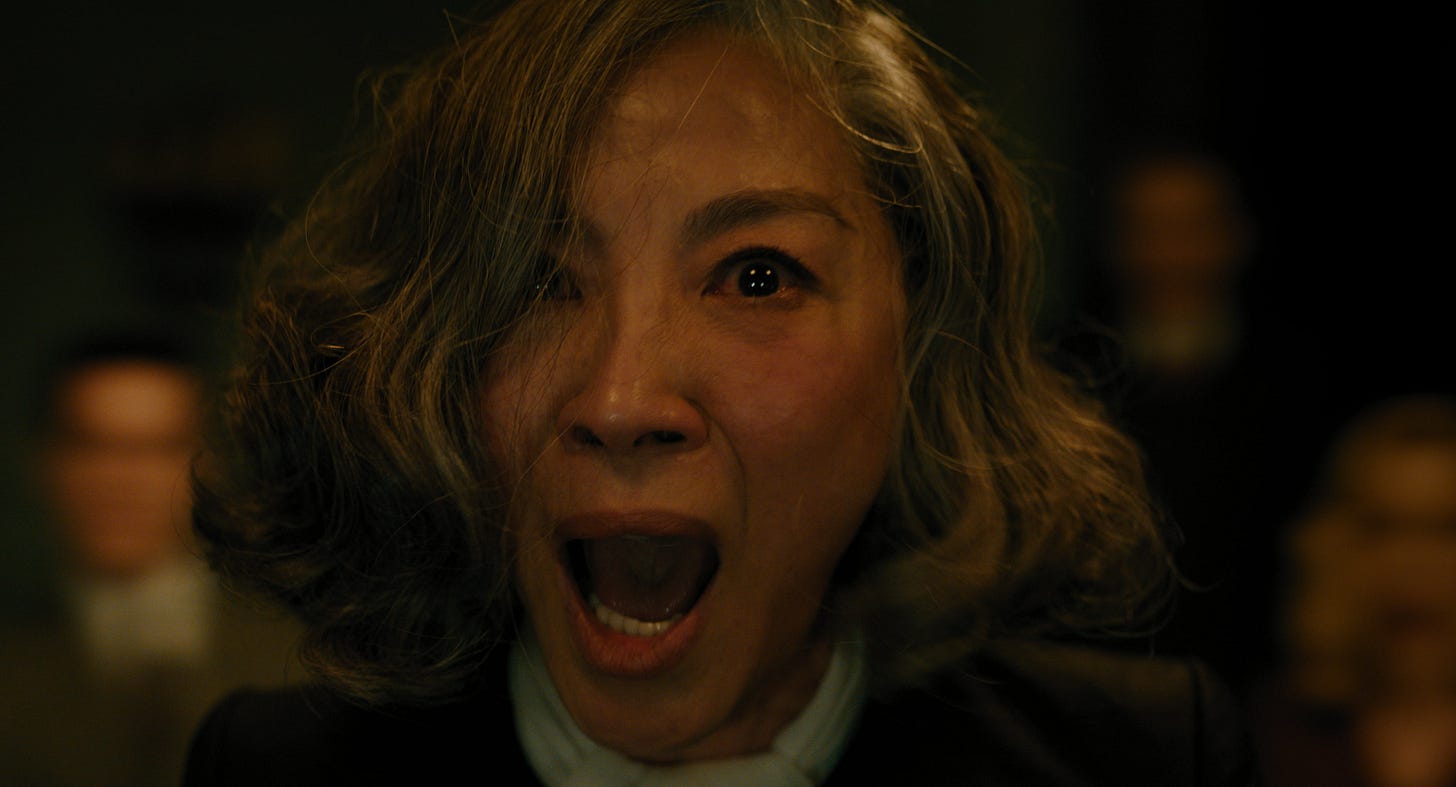
But even before the twist, screenwriter Michael Green has scribed a really great sequel for this character, testing his dislike and disbelief in the supernatural elements of our world. Poirot believes that any supernatural or spiritual entity can be explained by physical and human elements being confused by fear and belief of the unexplainable. Here, he is ready with answers for some things, but also appears to be the only one seeing visions of dead children and hearing voices, cutting off his ability to focus and find the killer. It’s a great subplot that changes the way Poirot must operate, all leading to a fantastic ending that explains some things while leaving others to personal beliefs.
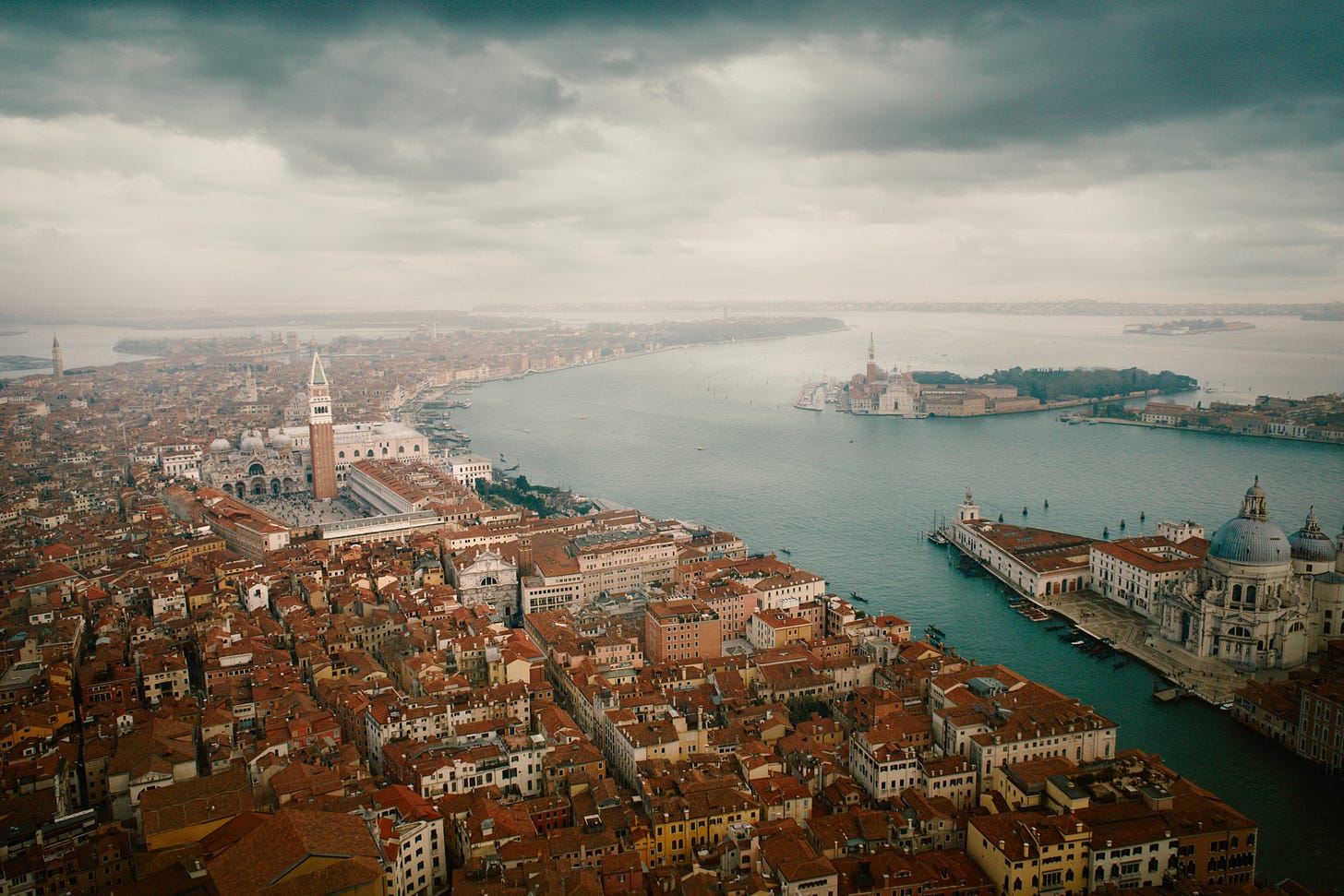
The film’s greatest strength is it’s shot design, built in collaboration by the director, Branagh, and his longtime cinematographer, Haris Zambarloukos. While Death on the Nile was a green screen heavy schlock, A Haunting in Venice does a rare feat for film — bringing the production to Venice. It’s rare because of the task of getting the equipment into the city, with all the production gear needing to be transported in by boat. Because of how unorthodox this was, this was the first film to be shot completely on digital cameras, although it’s hard to tell through the brilliant way they changed the cameras settings. The work paid off right away, opening the film with dutch angled Venice locations in overcast lighting, accenting the secrets lying within the canals and structures that hide within the old city. But it’s when the investigation begins that things get even more interesting. A mansion is bigger than most people’s homes, but can feel claustrophobic when locked within its confines, forced to find a mystery killer that could strike again. It’s these mansion scenes where Zambarloukos opts for wide lenses and close up conversations, adding suffocation and dreariness to an already creepy setting.
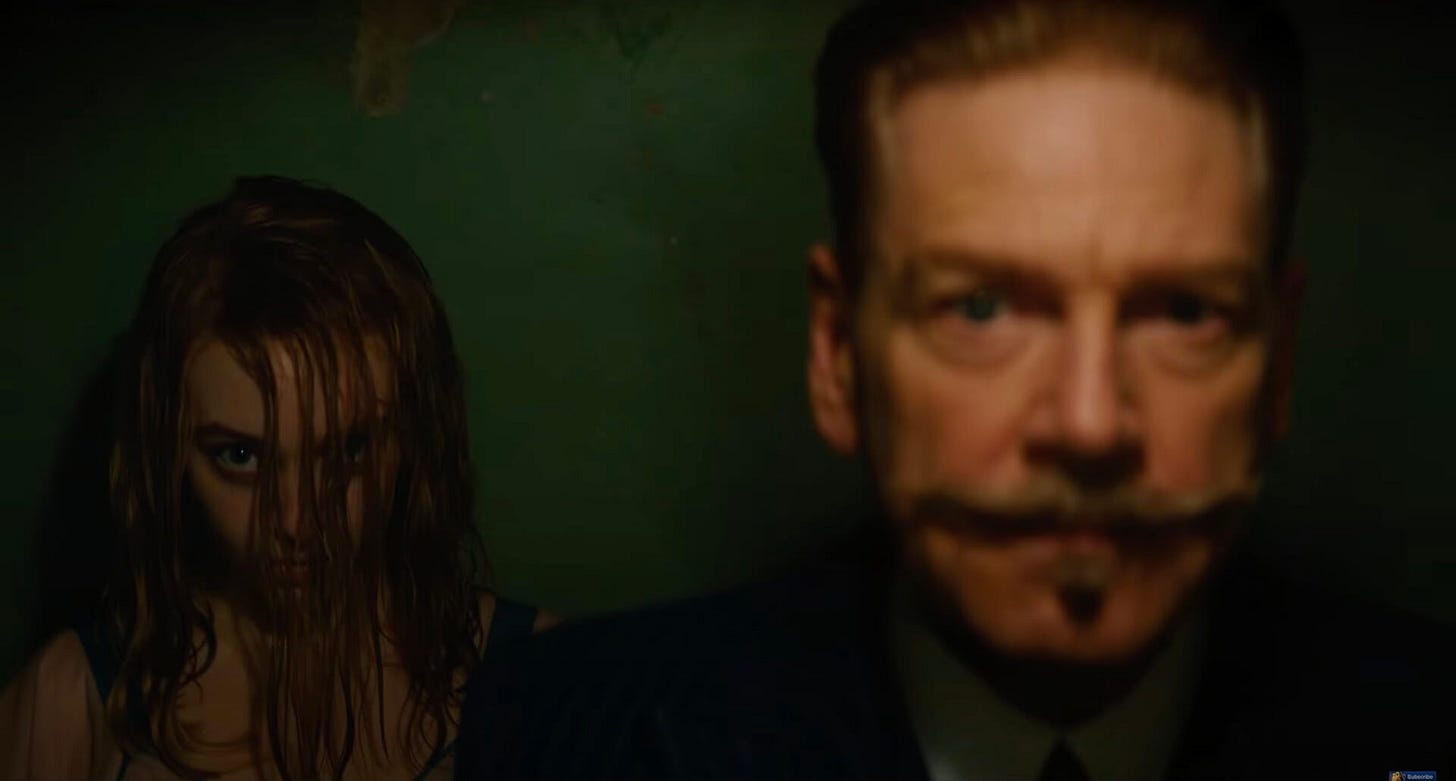
Unfortunately, there are some weak spots here. While extremely fun, there are times when the story slows down to a screeching halt, checking in with all the characters in interviews that are blocked as simple as possible, revealing things about the character’s pasts. It was during these scenes peppered throughout the middle act where I zoned out consistently, only to be pulled back in by loud noises and jump scares that hardly deliver. Branagh doesn't have a horror resume and it really shows here. While the concept of the film is brilliant for Poirot, it doesn’t grab the attention or carry the star power as Branagh’s previous two installments have.
A Haunting in Venice is exactly what you crave in a movie, and one we need to support when it gets a theatrical release. In this day and age, studio dramas and mystery thrillers like this are subjected to streaming releases — hindering audiences from seeing these projects as the filmmakers intended. Seeing Venice in beautiful 4k visuals is worth the price of admission alone, and the cast for all of Poirot’s adventures in this new trilogy always seem to be having a lot of fun together (especially Jamie Dornan, who seems to have found a special connection with Branagh behind the camera). While his horror resume is lacking, Branagh’s history with stage production and love of Shakespeare have always helped him direct large casts like this throughout his career. This is another solid release in a year that’s giving us a long list of quality, re-watchable, new movies.



